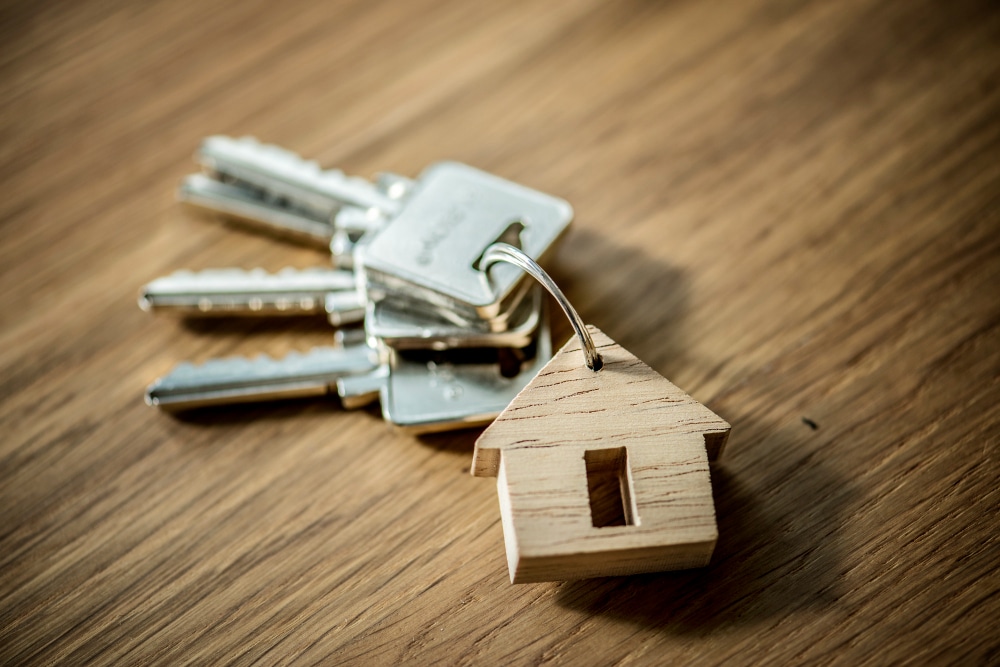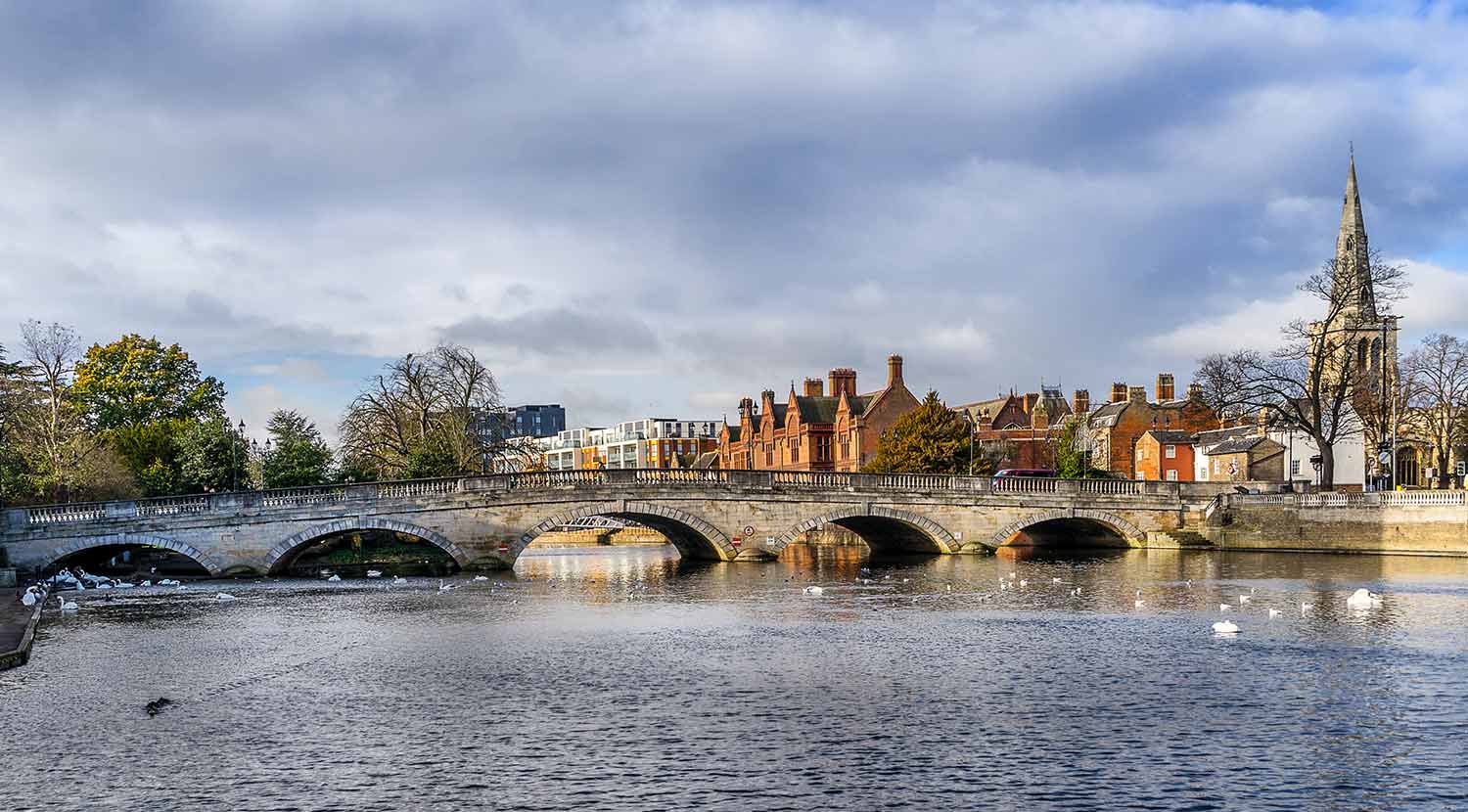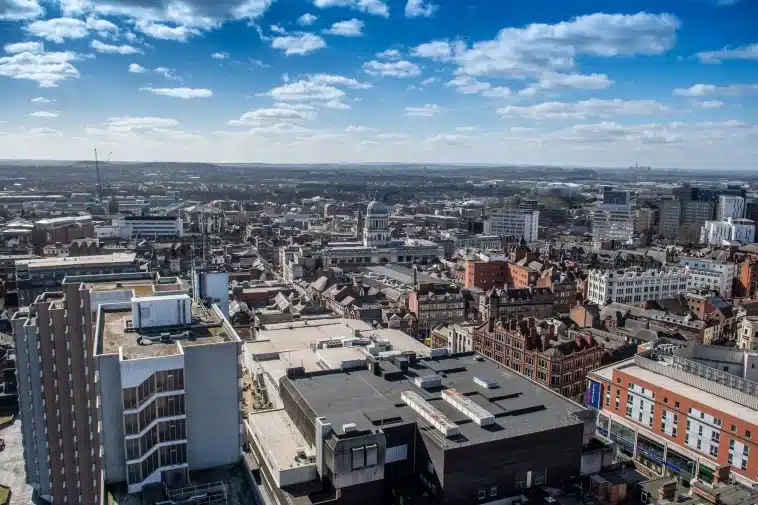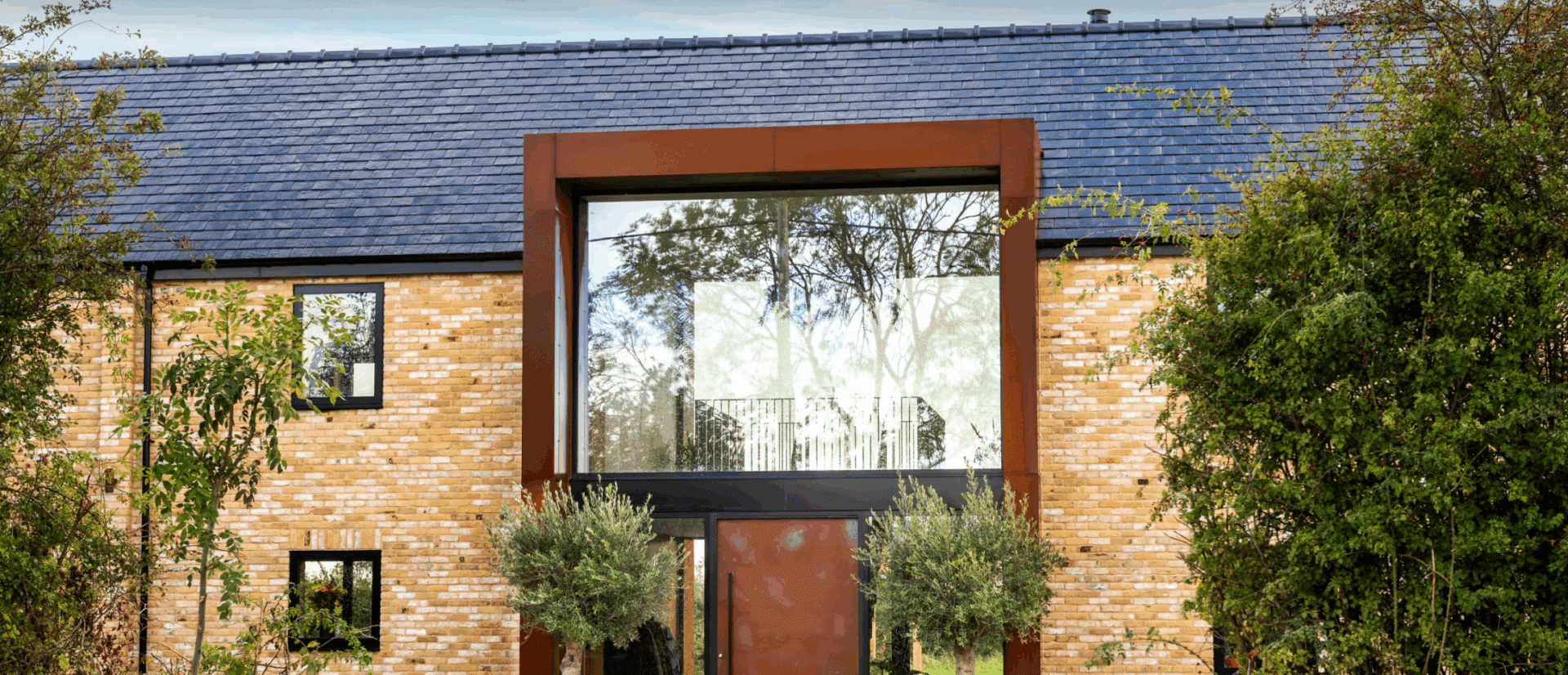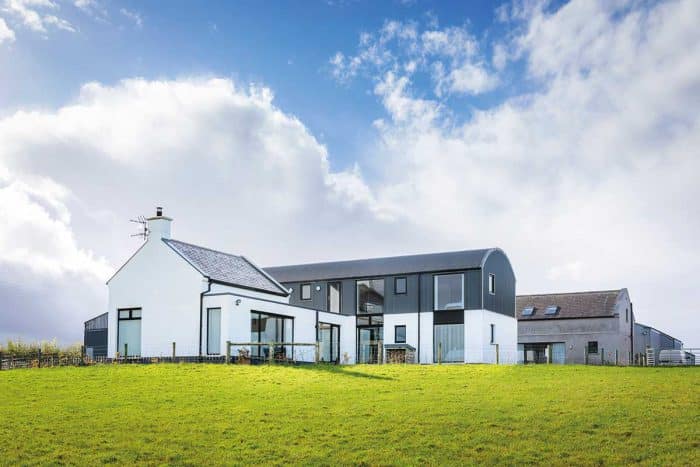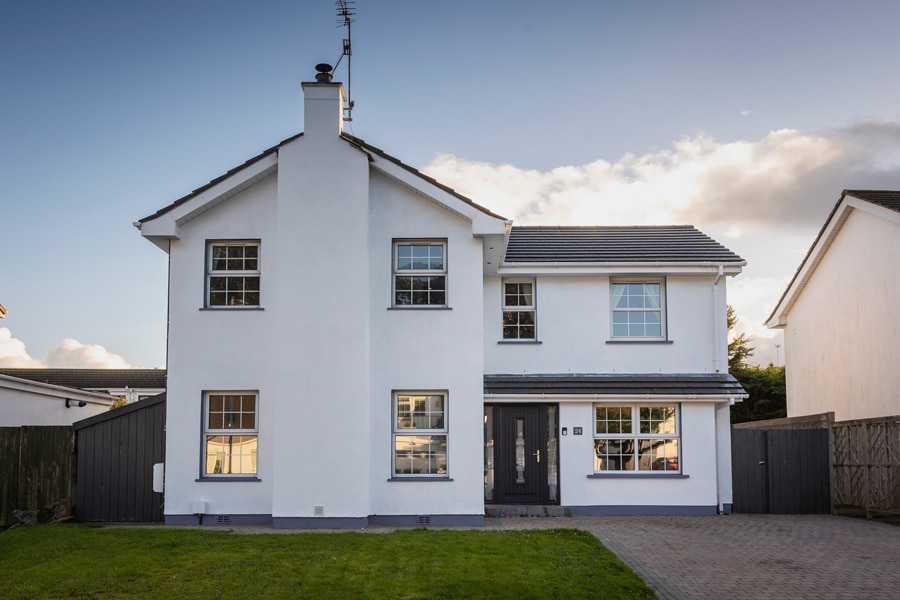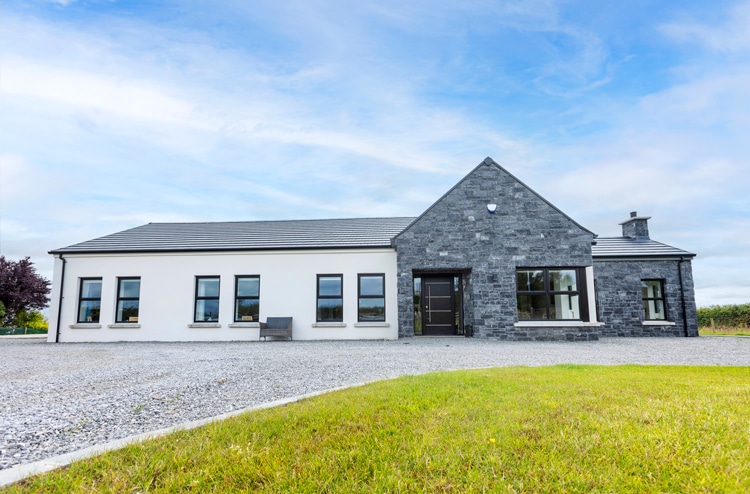Find out what self-build mortgages are, how they work, how they’re different to regular mortgages and how to get one in 2023.
In this article we cover:
- What is a self-build mortgage and how it differs from a regular mortgage
- How much you can borrow for a mortgage in Ireland in 2023
- What stage your project needs to be at to qualify for a self-build mortgage
- How much of a deposit you need and whether land can be put up as a deposit
- How expensive are self-build mortgages?
- Do all lenders offer self-build mortgages?
- What documents you need to apply
- How the stage payments work with self-build mortgages
- What the disadvantages are
A self-build mortgage will help you get the funds to get started building your home. However, they are quite different to a standard mortgage. Here’s what you need to know.
What are self-build mortgages?
The biggest difference between a self-build mortgage and a standard mortgage is that the bank lends you money in stages, as your home is being built.
in a traditional mortgage, the loan is secured on the value of the final property and only made available at the end of the buying process. Unless you’re build contractors have incredible payment terms, this simply doesn’t work when you are building.
As you are getting money in stages you only have to pay interest on the funds you have already drawn down. Not the whole amount of the mortgage.
This also protects the mortgage lender from being left in the lurch if the build goes wrong, by ensuring that each individual loan is matched up to the value of each build stage.

How much can I borrow?
In NI, you can typically borrow 75 per cent of the project costs. Or more if you already own the land you are building on. You can borrow up to 4.5 times your income.
In ROI, from the 1st of January 2023, lenders will allow you to borrow up to four times your gross income for your self-build. In exceptional circumstances loand of 4.5 times can be made, but that’s usually only to applicants with higher salary levels as the lenders assess these as lower risk.
You will need at least 10 per cent of the total build and site cost for a deposit. It’s also important you have around 10 per cent of the value of your build saved on top of your deposit to cover an unforeseen costs. The lenders will look for prood of this continguency fund.
In ROI first time self-builders are eligible to apply for the Help to Buy scheme, which can provide up to €30,000 in tax relief to help with your deposit.
The First Home Scheme, where the government can provide up to 30 per cent of the value of your property on top of the Help to Buy scheme, currently does not extend to self-builders, but is expected to be extended in 2023.
The UK’s Help to Build scheme operates similarly to the Republic’s First Home Scheme, providing 5 to 20 per cent of the cost of the build, in return for an equity stake in your home. However, Help to Build is currently not available in NI.
What do I need before applying for a self-build mortgage?
Before applying for a self-build mortgage, you will need two things. First you will need to find a site to build you property. Then you will need to get planning permission for the house you plan to build on that site.
Note that lenders will not give you the funds until you’ve obtained planning permission. They will also not help fund the cost of getting planning permission.

How much of a deposit do I need for my self-build mortgage?
First time buyers need a 10 per cent deposit, with a maximum Loan to Value (LTV) of 90 per cent. Loan to Value refers to the value of your mortgage compared to the value of your build.
This LTV is based on the cost of the site along with the cost of construction, or 90 per cent of the sit value once it has been completed, whichever is lower. Second time buyers need a 20 per cent deposit, with a maximum LTV of 80 per cent.
However, many lenders allow you to use the site as a deposit if you already own it.
If you are gifted the site, this can count toward your deposit, so for example if your site is worth over 10 per cent of the combined built and site cost, then you can borrow 100 per cent for your build.
How expensive is a self-build mortgage?
Usually building your own home will turn out to be cheaper in the long run, so you can get a better loan to value. Which usually means a chepear mortgage rate.
Mortgage rates for self-builds and buying a home outright are the same in ROI. However, in NI different mortgage rates apply to self-build projects.
Unfortunately these are higher than standard mortgage rates due to the higher risk of the lender.
The biggest difference between a self-buld mortage and a standard mortgage is that the bank lends you money ins tages, as your home is bieng built…
Do all lenders offer self-build mortgages?
Once you have a site and planning permission, you can get started on your self-build mortgage application. Only certain lenders offer self-build mortgages.
In ROI, these are AIB (who own Haven and EBS), Permanent TSB and Bank or Ireland. In NI there are more to choose from, with 26 different providers offering self-build mortgages.
Talk to a mortgage broker to help you choosewhich lender is best for your particular build.
What do I need to apply?
You will need the following document to get you started:
- Evidence of contribution
- Full planning permission
- Map of site
- Estimates of building plans and costs
- Fixed price contract
Once you have these documents in order, you will get an inital offer from a lender. It’s importangt to nnote that your building plans and cost estimates must be realistic for your loan to be approved.
If your cost per square foot is too low or there is insufficient contingency then lender will almost certainly not approve the loan. So if you are planning to cut any corner it is easy to come a cropper here and not get the funds you need.
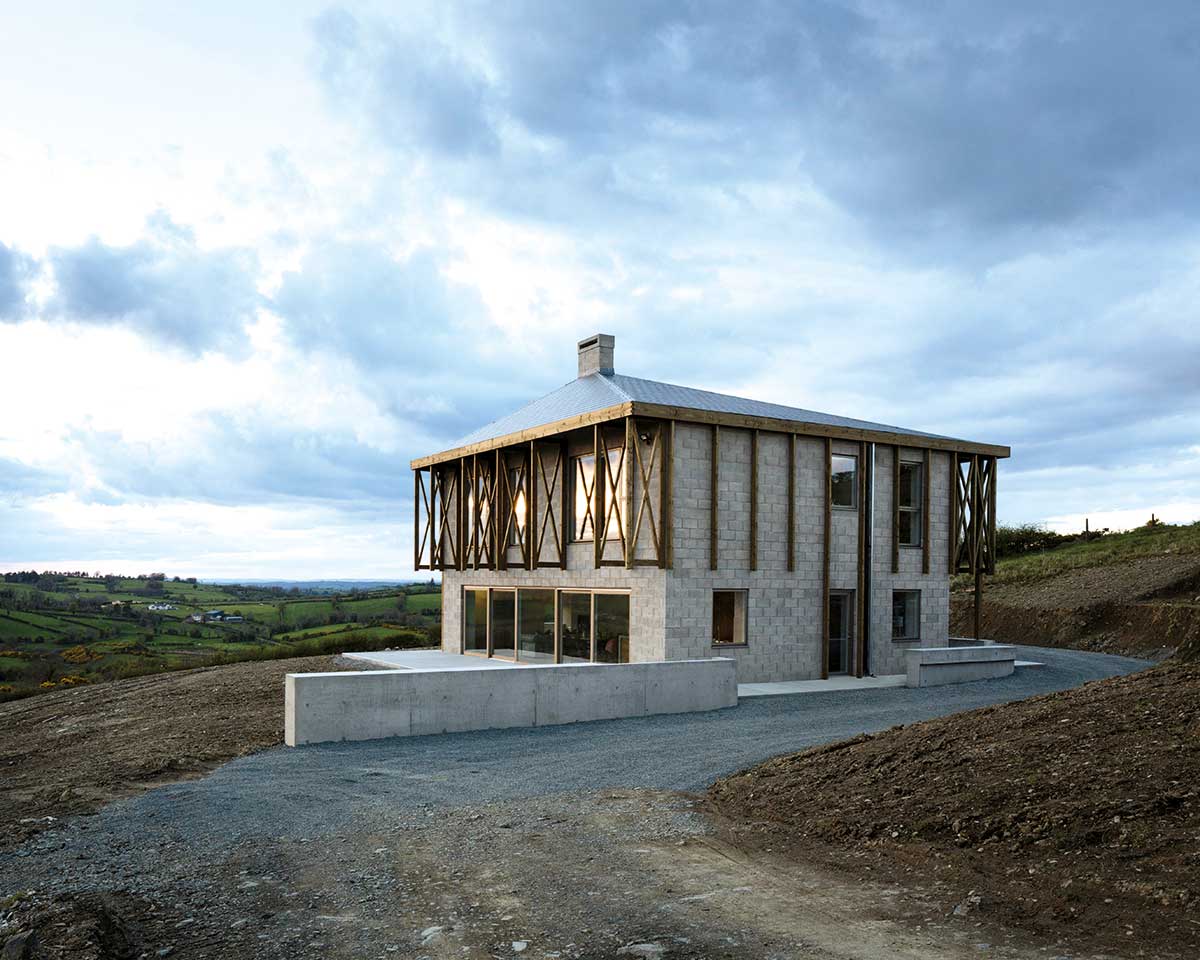
How do the stage payments work?
After your self-build mortgage is approved, you will begin to receive funds that correspond with the stages of your property being built.
There are generally four to six stages depending on your build, which can include:
- Buying the site
- Substructure
- Completion of the roof
- Completion of the floor
- First and second fix
- Certified completion
Depending on the length of your building period, these stage payments are generally spread out over 18 months.
At the ompletion of each stage lenders will seek proof that the build has reached a certain level, before releasing the next tranche of funds.
At each stage above the architect, as your assigned certifier will send a certification of completion to your solicitor who in turn sends this to your lender.
Once the lender receives the certification then funds for the relevant stage will be released.
Usually you don’t need an independent valuer to visit the property at these interim stages, but one is usually required at the point of certified completion.
Be warned this process involves a lot of paperwork an can slow your build down significantly if you aren’t on top of what you need at each stage.
In NI it is possible to get funds in advance of each stage of the build rather than in arrears, but you will pay extra interest for the privilege. This is not an option in ROI.
What are the disadvantages to a self-build mortgage?
Financing your home takes much more time and effort than finding an already built home. It also requires a serious amount of planning and cen be a very long process.
You have to plan out all aspects of the build such as finding an architect, getting planning permission, finding a site, finding a mortgage etc.
And there are some risks attached with building your own home, such as construction taking longer than expected or going over budget. If you are up to your maximum lending amount, this can become a significant issue.

